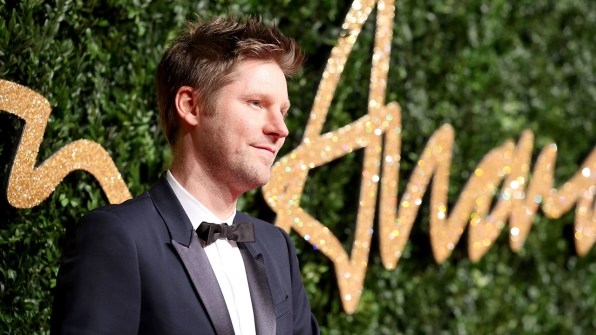Burberry Combined Business And Creativity In One Exec. Here’s Why It Was A Bad Fit
In the world of fashion, it takes a special alchemy of talent to run a company. You need a visionary, of course: someone who can turn the human body into a canvas and reimagine the way we dress. But you also need a businessperson who understands how to build an engaging brand on the internet, connect with customers on social media, and experiment with an ever-changing smorgasbord of apps and tech tools. It’s rare to find all of these skills in the same person.
Burberry has learned this the hard way. Since 2014, Christopher Bailey has struggled to manage both the creative and the business side of Burberry in the dual roles of CEO and chief creative officer. (July 17, 2017), Bloomberg Businessweek announced that Bailey, 46, was turning over the role of CEO to Marco Gobbetti, who has spent the last six months as Burberry’s interim executive chairman for Asia, and previously served as the CEO of Celine.
In Bloomberg’s story, Bailey was chatting with Gobbetti over a casual breakfast when it suddenly occurred to the CEO that he would like to pass the role on to his more seasoned colleague. “It wasn’t a big decision for me whether I had a CEO title or not,” Bailey told Bloomberg TV last summer, when these decisions were being worked out.
But there was much more going on behind the scenes.

From the start, shareholders thought that asking Bailey to take on both roles was poorly conceived. “They should let Bailey do what he does best, which is design,” one investor said. “It feels like he has been overstretched in both positions.”
Since he became CEO, Bailey’s enormous compensation package has regularly made headlines and stirred up outrage among shareholders. Over the last few weeks, the U.K.’s Investment Association and the Institutional Shareholder Services, both of which advise fund managers, issued respective alerts about Burberry, urging shareholders at its annual meeting to vote against the company’s report on compensation, claiming that Bailey was being overpaid.
Back in 2014, Burberry faced an earlier shareholder rebellion due to Bailey’s compensation, which included a £1.1 million annual salary plus a cash bonus of up to twice his salary, a onetime award of shares worth nearly £15 million, and a £440,000 cash allowance. A full 52.7% of investors voted against his pay package, which made it one of the largest boardroom protests against executive compensation.
Burberry didn’t make any alterations to the pay package, but Bailey wasn’t able to collect all of it because the company’s fortunes sagged during his tenure as CEO. In 2015, Bailey did not receive his performance bonus after failing to meet the company’s profit target, which effectively resulted in a 75% pay cut down to £1.9 million. In 2016, that figure inexplicably increased to £3.5 million, even though sales were down. With the end of Burberry’s expensive experiment in fusing his creative and business roles, Bailey will receive a £10.5 million payout in shares before resuming his previous role at the company.
Revenue at Burberry has been in decline for three years in a row, which seems partly due to the brand’s lack of clarity about its own identity. Burberry sells a hodgepodge of products, from accessibly priced watches and scarves that cost a few hundred dollars to trench coats that go for upwards of $4,000. Products are available at thousands of stores, from Macy’s to Neiman Marcus, causing confusion about what the brand really stands for. Coach and Kate Spade have had similar problems with market oversaturation, resulting in the dilution of brand image.
But fashion brands can learn from Burberry’s mistakes. In many ways, the design side is meant to clash with the commercial side: Creative directors need to be able to think independently of the balance sheet, sketching out wildly ambitious collections and runway shows without worrying about merchandising costs and pricing strategies.
This is something that any emerging designer will tell you. Most fashion startups fail. Designers often have bold visions for their collections, but constantly run into problems with it comes to actually structuring a sustainable business that does not hemorrhage cash. That’s why companies like Brand Assembly and Assembled Brands have popped up to give new designers support with everything from balancing their profit and loss statements to launching an e-commerce platform.
“Many designers–I’d even venture to say most designers–aren’t wired to think about balance sheets,” Alex Repola, Brand Assembly’s cofounder, told me a few months ago. “But that’s okay. They often find a business partner who can lay out some guardrails for them.”
For Bailey, this business partner was Angela Ahrendts, who was CEO between 2006 and 2014, before leaving for Apple. She and Bailey formed a powerful partnership that was responsible for transforming Burberry from a stodgy 160-year-old brand that then became overexposed into an exciting, high-tech fashion label. With the two of them at the helm, Burberry grew quickly, generating $3 billion in annual revenue and expanding its employee base to 11,000.
Will Gobbetti be able to replicate this magic as Burberry’s CEO? We’ll have to wait and see. But one thing is clear: The classic luxury brand is ready for yet another makeover—and fast.
The luxury brand’s three-year experiment at blending the two sides failed. Christopher Bailey is quitting his role as CEO to focus on designing.
In the world of fashion, it takes a special alchemy of talent to run a company. You need a visionary, of course: someone who can turn the human body into a canvas and reimagine the way we dress. But you also need a businessperson who understands how to build an engaging brand on the internet, connect with customers on social media, and experiment with an ever-changing smorgasbord of apps and tech tools. It’s rare to find all of these skills in the same person.
Fast Company , Read Full Story
(7)













